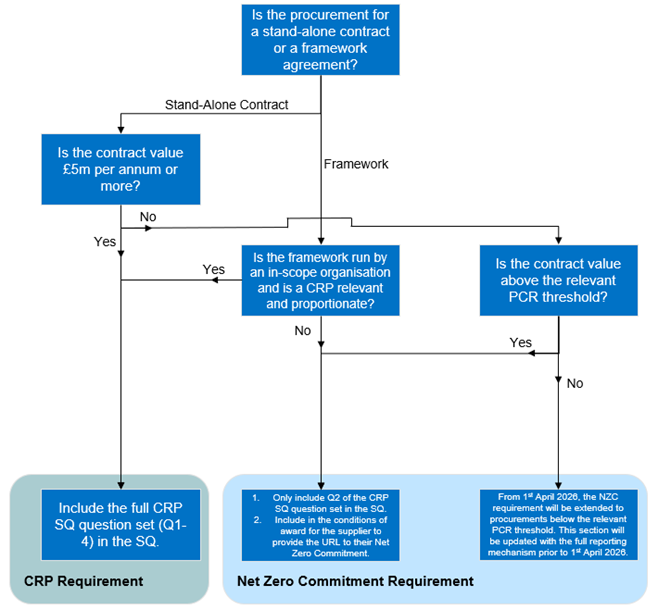Evolving legislation is shaping sustainability requirements throughout public sector procurement. In particular PPN 06/21 has advancing stipulations for NHS suppliers. Here’s what you need to know.
What is PPN 06/21?
Procurement Policy Note 06/21 (PPN 06/21) is a UK government policy that requires suppliers, that wish to bid for public sector contracts, to demonstrate their commitment to reducing carbon emissions in line with the UK’s 2050 net zero target.
Whilst it affects all central government departments and executive agencies, the NHS has added further requirements to their supply chain in line with PPN 06/21. The note was published in June 2021 (hence 06/21) and came into effect the following September.
Who does PPN 06/21 affect?
When PPN 06/21 first came into effect, only large in-scope suppliers were affected. Now, due to evolution of the legislation, virtually any business who wants to work with the NHS now needs to satisfy PPN 06/21 in some way. Here’s how it breaks down:
- Contracts over £5 million per year (since April 2023), plus framework agreements run by an in-scope organisations: Suppliers need to publish a Carbon Reduction Plan (CRP).
- Smaller contracts below £5 million but over £10 thousand per year (since April 2024): SMEs need to demonstrate a Net Zero Commitment (NZC).
- From April 2026 the NZC requirement will be further extended to a lower threshold, with full details being released early in 2026.

What does this mean for me?
If you’re a major supplier: You will likely need a full Carbon Reduction Plan (CRP).
If you’re an SME: You will likely need to create and publish at Net Zero Commitment (NZC).
What is a carbon reduction plan?
A business’ CRP has to:
- Confirm their UK operations’ commitment to net zero by 2050 or earlier
- Give baseline and current emissions data for scope 1 and 2, as well as some scope 3 emissions
- Give emissions figures in carbon dioxide equivalent (CO2e) for the seven greenhouse gases named in the Kyoto Protocol
- List all environmental management measures a supplier uses to govern their work
- Be approved by the business’ board or company director
- Be clearly signposted on their website and updated at least annually
Some similar documents might feel like they do the same job as a CRP, but they’re lacking some critical compliance elements. We often see businesses believing they can submit their CSR statement or carbon net zero strategy instead. They can’t. CRPs request a specific set of information and need to be updated annually; if you can’t produce one, you’ll be disqualified from pitching for NHS work.
What’s a Net Zero Commitment, and what should it include?
Net Zero Commitments are a subset of Carbon Reduction Plan requirements. If you’ve produced a CRP, you’ll already satisfy any requirement for an NZC. However, as many SMEs don’t yet require a CRP, a NZC pledge is required. As a standalone document, an NZC must:
- Confirm a supplier’s UK operations’ commitment to net zero by 2050 or earlier, measuring the same scope 1, 2, and 3 emissions as a CRP
- Be clearly published and signposted on the internet, such as on the business’ website, or a pledge website such as Green Mark’s.
Our advice would be to talk to an expert. Ensuring compliance with PPN 06/21 can seem daunting, regardless of your business size. The specific requirements for CRPs and NZCs demand careful attention to detail and a thorough understanding of emissions reporting.
Read our article on how Carbon Architecture and Green Mark help SMEs and major suppliers navigate PPN 06/21 here.

